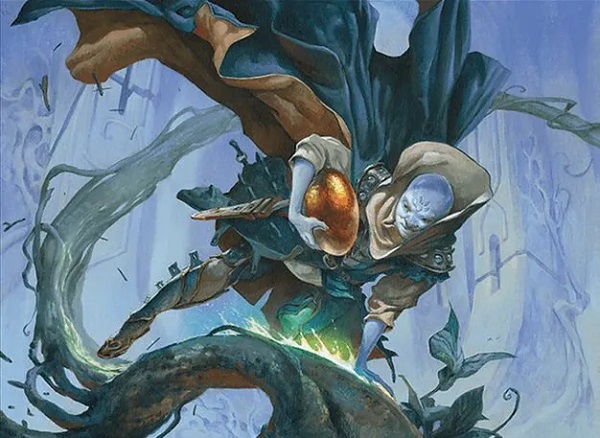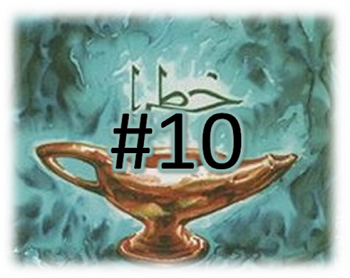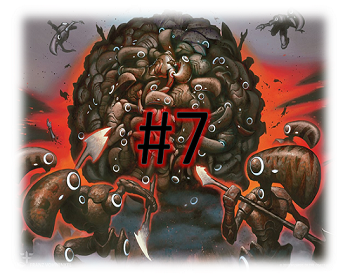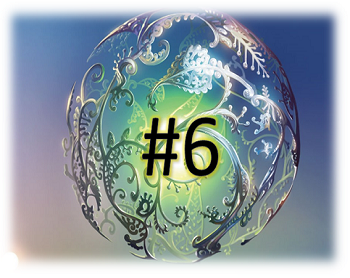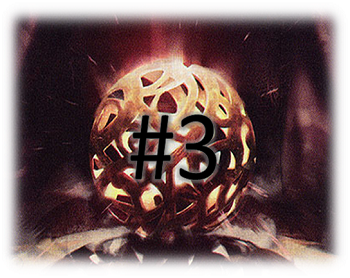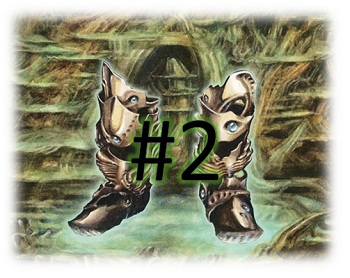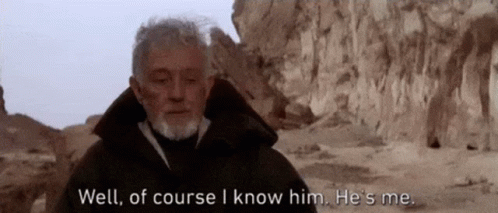(Troyan, Gutsy ExplorerTroyan, Gutsy Explorer | Art by Jesper Ejsing)
I Got Five On It!
Welcome to Too-Specific Top 10, where if there isn’t a category to rank our pet card at the top of, we’ll just make one up! (Did you know that SubmergeSubmerge is the only blue creature removal spell you can play for free without exiling, discarding, or returning cards to your hand?)
A year or two ago, I was talking with a friend about cEDH, as I was just starting to get into it. As the conversation went on and I kept on peppering them with deck ideas that would be summarily rejected, they rather exasperatedly said, "Look, it's about access to colors, combos, and card draw." Thinking about it for a minute, I said, "Well then, could you make a good cEDH deck on the basic premise of having all five colors and ten cards in 'hand'?" They were dubious, but I pressed on with this nonsense to make the deck that I play in cEDH today, 5-Color 10-Card:
5c10c
View on ArchidektCommander (2)
- 1 Cecily, Haunted MageCecily, Haunted Mage
- 1 Othelm, Sigardian OutcastOthelm, Sigardian Outcast
Companion (1)
- 1 Keruga, the MacrosageKeruga, the Macrosage
Creatures (32)
- 1 Archon of EmeriaArchon of Emeria
- 1 Archon of Valor's ReachArchon of Valor's Reach
- 1 Arena RectorArena Rector
- 1 Aven MindcensorAven Mindcensor
- 1 Brazen BorrowerBrazen Borrower
- 1 Deceiver ExarchDeceiver Exarch
- 1 Elesh Norn, Mother of MachinesElesh Norn, Mother of Machines
- 1 Elvish Spirit GuideElvish Spirit Guide
- 1 Emiel the BlessedEmiel the Blessed
- 1 Eternal WitnessEternal Witness
- 1 Faeburrow ElderFaeburrow Elder
- 1 Felidar GuardianFelidar Guardian
- 1 Foundation BreakerFoundation Breaker
- 1 Grand Arbiter Augustin IVGrand Arbiter Augustin IV
- 1 Imperial RecruiterImperial Recruiter
- 1 Ingot ChewerIngot Chewer
- 1 Karmic GuideKarmic Guide
- 1 Kiki-Jiki, Mirror BreakerKiki-Jiki, Mirror Breaker
- 1 ManglehornManglehorn
- 1 Mayhem DevilMayhem Devil
- 1 Notion ThiefNotion Thief
- 1 Opposition AgentOpposition Agent
- 1 Phyrexian MetamorphPhyrexian Metamorph
- 1 Professional Face-BreakerProfessional Face-Breaker
- 1 Recruiter of the GuardRecruiter of the Guard
- 1 Sanctum PrelateSanctum Prelate
- 1 Simian Spirit GuideSimian Spirit Guide
- 1 SubtletySubtlety
- 1 Thalia, Heretic CatharThalia, Heretic Cathar
- 1 Trophy MageTrophy Mage
- 1 Village Bell-RingerVillage Bell-Ringer
- 1 Zur the EnchanterZur the Enchanter
Instants (17)
- 1 Baleful MasteryBaleful Mastery
- 1 Chord of CallingChord of Calling
- 1 DismemberDismember
- 1 Fierce GuardianshipFierce Guardianship
- 1 FireFire
- 1 Fire CovenantFire Covenant
- 1 Force of NegationForce of Negation
- 1 Force of VigorForce of Vigor
- 1 Force of WillForce of Will
- 1 Hide // SeekHide // Seek
- 1 Krosan GripKrosan Grip
- 1 Mindbreak TrapMindbreak Trap
- 1 MisdirectionMisdirection
- 1 RepudiateRepudiate
- 1 Ricochet TrapRicochet Trap
- 1 Snuff OutSnuff Out
- 1 SubmergeSubmerge
Enchantments (5)
- 1 Arcane LaboratoryArcane Laboratory
- 1 Aura of SilenceAura of Silence
- 1 Leyline of the VoidLeyline of the Void
- 1 Rhystic StudyRhystic Study
- 1 Rule of LawRule of Law
Lands (32)
- 1 Ancient TombAncient Tomb
- 1 Arid MesaArid Mesa
- 1 BadlandsBadlands
- 1 BayouBayou
- 1 Bloodstained MireBloodstained Mire
- 1 Boseiju, Who EnduresBoseiju, Who Endures
- 1 Breeding PoolBreeding Pool
- 1 City of BrassCity of Brass
- 1 Command TowerCommand Tower
- 1 Exotic OrchardExotic Orchard
- 1 Flooded StrandFlooded Strand
- 1 Gaea's CradleGaea's Cradle
- 1 Gemstone CavernsGemstone Caverns
- 1 Mana ConfluenceMana Confluence
- 1 Marsh FlatsMarsh Flats
- 1 Misty RainforestMisty Rainforest
- 1 Otawara, Soaring CityOtawara, Soaring City
- 1 PlateauPlateau
- 1 Polluted DeltaPolluted Delta
- 1 SavannahSavannah
- 1 Scalding TarnScalding Tarn
- 1 ScrublandScrubland
- 1 Steam VentsSteam Vents
- 1 TaigaTaiga
- 1 Tarnished CitadelTarnished Citadel
- 1 Tropical IslandTropical Island
- 1 TundraTundra
- 1 Underground SeaUnderground Sea
- 1 Verdant CatacombsVerdant Catacombs
- 1 Volcanic IslandVolcanic Island
- 1 Windswept HeathWindswept Heath
- 1 Wooded FoothillsWooded Foothills
Artifacts (4)
- 1 Ashnod's AltarAshnod's Altar
- 1 Birthing PodBirthing Pod
- 1 Cursed MirrorCursed Mirror
- 1 The One RingThe One Ring
Planeswalkers (4)
- 1 Grist, the Hunger TideGrist, the Hunger Tide
- 1 Narset, Parter of VeilsNarset, Parter of Veils
- 1 Tezzeret the SeekerTezzeret the Seeker
- 1 Vivien on the HuntVivien on the Hunt
Sorceries (4)
- 1 Eldritch EvolutionEldritch Evolution
- 1 Grim TutorGrim Tutor
- 1 IncubationIncubation
- 1 Sea Gate RestorationSea Gate Restoration
I've talked a bit about the idea that built this deck before, but rarely about the actual construction of it. Obviously the challenge here is that if you're going to include Keruga, the MacrosageKeruga, the Macrosage as your companion, that means that you're cutting out a good 90% of cEDH staples that make the format work, and probably cutting out more or less all of your interaction over the first two turns.
...Or does it?
From Force of WillForce of Will to Brazen BorrowerBrazen Borrower, there is no lack of ways to play spells that you can cast for free or that you can cast for less than their total mana value as Keruga sees it. And with access to all five colors, you can play all of them, resulting in an interaction package of 18 spells that you can cast in the deck for less than three (or just free).
Which brings us to the new commander we'll be talking about this week.
Troyan, Gutsy ExplorerTroyan, Gutsy Explorer, like KerugaKeruga before him, cares about the mana value of spells that he's going to help cast. The difference? He wants to go even bigger.
Top 10 Simic Cards That Cost Five or More on the Stack, But Not in Reality
So I figure, if I can make a tier two cEDH deck that only has spells that cost three or more with five colors to work with, surely I can make a mid-powered Simic deck that only has spells that cost five or more, right?
Only, it's actually even harder than that. There's a trick I used rather extensively with KerugaKeruga that won't work with TroyanTroyan.
Split cards in all of their various formats have been around for decades now, so it's fairly common knowledge that their mana value is considered to be the total mana costs of both halves of the card put together. This is true for every facet of where cards can end up, except on the stack. There, when you cast the Petty Theft half of Brazen BorrowerBrazen Borrower. It only has a mana cost of two, as advertised in the text box. The same is true for the more normal split cards such as Fire // IceFire // Ice, Fuse cards like Wear // TearWear // Tear, and Aftermath cards like Dusk // DawnDusk // Dawn, in addition to Adventures.
That's right, they put a commander into the Adventure set that doesn't really work with Adventures.
So, with that crushing disappointment, on to the "real" five-mana cards.
Criteria: Cards within the Simic color identity that will have a mana value of five or more while on the stack but can be cast through another means that can cost less mana. As is tradition, all results are ordered by EDHREC score.
10. Junk WinderJunk Winder
(30,827 Inclusions, 2% of 1,488,091 Decks)
Junk WinderJunk Winder is my favorite kind of new powerhouse card: One that is only a powerhouse within its specific niche. If you're in a token deck, you can't do much better than a 5/6 for two mana that will routinely stun your opponent's permanents. If you're not, then there's no way you're going to find room for a seven mana 5/6 that might occasionally tap some things.
For our purposes? Neither TroyanTroyan nor KerugaKeruga care about tokens, so unless we found an extreme theme along the way, this one's probably a no go.
9. MisdirectionMisdirection
(34,305 Inclusions, 2% of 1,488,091 Decks)
Usually, the general makeup of building a low-power deck would mean that we wouldn't even be considering free spells like MisdirectionMisdirection. If the game's going slower, why bother with the card disadvantage that will have less targets to start with because less people will be playing interaction in the first place? Not so when it comes to building our five-mana-or-more version of TroyanTroyan! With us not doing anything at all for the first three to four turns of the game, we're going to need every single one of exactly these kinds of effects we can find. In other words, MisdirectionMisdirection is exactly the kind of card we're hoping to find on this list!
8. Thought MonitorThought Monitor
(41,646 Inclusions, 3% of 1,488,091 Decks)
Thought MonitorThought Monitor isn't quite as much of a slam dunk, but there is one consideration that might at least make it worth looking at: The ever-increasing amount of artifact lands that you can play in Magic: The Gathering.
Top 10 Simic Artifact Lands
- Darksteel CitadelDarksteel Citadel
- Seat of the SynodSeat of the Synod
- Treasure VaultTreasure Vault
- Tree of TalesTree of Tales
- Power DepotPower Depot
- Tanglepool BridgeTanglepool Bridge
Whelp, six out of 36 ain't gonna cut it, and five-mana artifacts aren't going to help soon enough. Next!
7. ThoughtcastThoughtcast
(47,076 Inclusions, 3% of 1,488,091 Decks)
I see that we're going to have a recurring issue here. ThoughtcastThoughtcast is a little easier on the artifact inclusions than Thought MonitorThought Monitor, but still not nearly enough.
6. Ghalta, Primal HungerGhalta, Primal Hunger
(Helms 3,238 Decks, Rank #268; 60,769 Inclusions, 4% of 1,396,503 Decks)
GhaltaGhalta, however, seems a lot more promising! Sure, it's not gonna come down on turn three or anything, but who cares? A 12/12 trampler is a problem worth waiting for, and there are a ton of creatures that can come out at a reduced cost, as we'll see in the Honorable Mentions.
5. Dig Through TimeDig Through Time
(95,765 Inclusions, 6% of 1,488,091 Decks)
And we've arrived. I almost didn't do this list when I saw the results, as there was a very similar bend in the top half from the list I did for Hidetsugu and Kairi. In short, when it comes to casting spells for less than they actually cost, it's difficult to do better than the blue Delve spells. Dig Through TimeDig Through Time comes down at number two on that list, to be sure, but will still all too often get you two cards and a look at seven for two mana, which is undeniably a great rate. Now, in our five-mana version of TroyanTroyan, it's going to be a lot more difficult to fill the graveyard early than it is in the average deck, but there are still a lot of mundane ways of doing so:
Top 10 Simic Sacrifice for "Mana" Lands
- Evolving WildsEvolving Wilds
- Myriad LandscapeMyriad Landscape
- Terramorphic ExpanseTerramorphic Expanse
- Misty RainforestMisty Rainforest et al
- Fabled PassageFabled Passage
- Prismatic VistaPrismatic Vista
- Blighted WoodlandBlighted Woodland
- Lotus FieldLotus Field
- Brokers HideoutBrokers Hideout et al
- Crystal VeinCrystal Vein
Outside of the obvious $40 fetches, there are still a ton of other lands that sacrifice themselves early to grab a more mundane land from your deck. Evolving WildsEvolving Wilds has been a precon staple for as long as Wizards has been making them, Myriad LandscapeMyriad Landscape was always going to be a turn three mainstay of this deck, and you can't beat Misty RainforestMisty Rainforest if you've got the pocketbook. That said, I've always disliked the idea of off-color fetches, so rather than spend a combined $300 dollars on a cEDH mana base for our silly arbitrary restriction of a Simic deck, I would instead suggest the likes of Fabled PassageFabled Passage, Prismatic VistaPrismatic Vista, Lotus FieldLotus Field, and Crystal VeinCrystal Vein. There are also other lands further down this list that will get you to five mana a bit quicker while also ending up in the graveyard, most notably from the Havenwood BattlegroundHavenwood Battleground and Saprazzan SkerrySaprazzan Skerry cycles. There are also what are sure to be the all-star lands of this deck in the Channel lands, most notably Boseiju, Who EnduresBoseiju, Who Endures, along with the Cycling lands you'll be able to discard early.
4. Treasure CruiseTreasure Cruise
(97,658 Inclusions, 7% of 1,488,091 Decks)
Once you've got all those lands in the graveyard, though, if we're being honest, the better thing to spend them on is probably Treasure CruiseTreasure Cruise. I heard tell once that three cards for one mana is pretty goodpretty good.
3. MulldrifterMulldrifter
(118,996 Inclusions, 8% of 1,488,091 Decks)
By that logic, then, three mana for two cards shouldn't be that great, but it turns out that creatures are good for other stuff too! While the now defunct DivinationDivination has never been all that impressive, if it triggered enter and dies triggers when it was cast, it would already be a lot better. Insert an ability to get onto the battlefield permanently for five, and there's a lot of things to like about MulldrifterMulldrifter, even in a TroyanTroyan deck that really is just looking to use it as the plain old "pay three mana, get two cards".
2. The Great HengeThe Great Henge
(136,294 Inclusions, 10% of 1,396,503 Decks)
The Great HengeThe Great Henge is amazing in decks that have even a reasonably sized commander, but as you may have noticed, TroyanTroyan is a 1/3. That means that we're going to have to get our cost reduction for this card from other sources if we're looking to abuse the miles of text on it.
Thankfully, I know a guy.
Top 10 Simic Creatures with Mana Value Five or More That Can Reduce The Great Henge's Casting Cost to Less Than Five That Can Cost Less Than Five While on the Stack
- Ghalta, Primal HungerGhalta, Primal Hunger
- Junk WinderJunk Winder
- Emrakul, the Promised EndEmrakul, the Promised End (technically possible, now that Battles exist)
- Metalwork ColossusMetalwork Colossus
- Earthquake DragonEarthquake Dragon
- Sawtusk DemolisherSawtusk Demolisher
- Deep-Sea KrakenDeep-Sea Kraken
- Ancient Stone IdolAncient Stone Idol
- Impervious GreatwurmImpervious Greatwurm
- Octavia, Living ThesisOctavia, Living Thesis
All righty then! It seems we have no lack of things that can come down early to get the price of The Great HengeThe Great Henge a bit more manageable. Sure, we'd rather have that stuff in the command zone, but considering what we do have in the command zone is a guy that makes yet more mana, I think we're gonna be all right.
1. Force of WillForce of Will
(164,081 Inclusions, 11% of 1,488,091 Decks)
The greatest free Counterspell ever printed meets our criteria, and even if it breaks the otherwise pretty reasonable pocket book price of our admittedly bad deck, we're still going to include it. The lolz alone make it worth the price of admission, and Urza knows we're going to have some bad stuff happen in the early turns while we have some blue spells stacked up in our hand.
Honorable Mentions
There are a lot of mechanics that make weird decks like KerugaKeruga and TroyanTroyan possible, so we would be doing ourselves a disservice not to jump into a few of the ones we haven't really covered yet.
Emerge
Emerge is a surprisingly deep mechanic out of Eldritch Moon. The general idea is you can sacrifice a creature with a high mana value (something we're gonna have plenty of, technically) to reduce a huge creature's mana value down to something more reasonable. Put simply, this is going to be the meat and potatoes of our late game in TroyanTroyan, and we're thankful for it. Especially Craterhoof Decimator of the ProvincesDecimator of the Provinces.
Mutate
One that we wish was a little deeper (and less confusing) of a mechanic is Mutate, which will also be making us some wicked creatures in the mid-game, while tacking on some utility as well.
Foretell
While I've never been that crazy about Foretell outside of my love of Stoic FarmerStoic Farmer, it does have a few decent picks that will work in this arbitrarily expensive deck, none moreso than Sage of the BeyondSage of the Beyond.
Miracle
Without dedicated top-deck manipulation, Miracle can get a little dicey. With that said, most of the effects we can play under our restrictions cost five mana at worst anyhow, so what do we have to lose?
All right, enough playing around, let's take a look at this weird list!
Eat Your Heart Out, Keruga
View on ArchidektCommander (1)
- 1 Troyan, Gutsy ExplorerTroyan, Gutsy Explorer
Companion (1)
- 1 Keruga, the MacrosageKeruga, the Macrosage
Sorceries (14)
- 1 Alrund's EpiphanyAlrund's Epiphany
- 1 Blessings of NatureBlessings of Nature
- 1 Coastal BreachCoastal Breach
- 1 Crush of TentaclesCrush of Tentacles
- 1 Devastation TideDevastation Tide
- 1 Echo of EonsEcho of Eons
- 1 Revenge of the HuntedRevenge of the Hunted
- 1 Seeds of RenewalSeeds of Renewal
- 1 Set AdriftSet Adrift
- 1 Spectral DelugeSpectral Deluge
- 1 Temporal MasteryTemporal Mastery
- 1 Temporal TrespassTemporal Trespass
- 1 Treasure CruiseTreasure Cruise
- 1 Verdant MasteryVerdant Mastery
Creatures (35)
- 1 AethersnipeAethersnipe
- 1 Ancient Stone IdolAncient Stone Idol
- 1 ArchipelagoreArchipelagore
- 1 Arrogant WurmArrogant Wurm
- 1 Avatar of GrowthAvatar of Growth
- 1 Avatar of MightAvatar of Might
- 1 Battle MammothBattle Mammoth
- 1 Brinelin, the Moon KrakenBrinelin, the Moon Kraken
- 1 CloudthresherCloudthresher
- 1 Decimator of the ProvincesDecimator of the Provinces
- 1 Dreamtail HeronDreamtail Heron
- 1 Dryad ArborDryad Arbor
- 1 Ethereal ForagerEthereal Forager
- 1 Gandalf, Westward VoyagerGandalf, Westward Voyager
- 1 Ghalta, Primal HungerGhalta, Primal Hunger
- 1 Hollow OneHollow One
- 1 Hooting MandrillsHooting Mandrills
- 1 Jin-GitaxiasJin-Gitaxias
- 1 Lashweed LurkerLashweed Lurker
- 1 Mockery of NatureMockery of Nature
- 1 MulldrifterMulldrifter
- 1 Murktide RegentMurktide Regent
- 1 Nemesis of MortalsNemesis of Mortals
- 1 Pouncing ShoresharkPouncing Shoreshark
- 1 Primeval ProtectorPrimeval Protector
- 1 Purple WormPurple Worm
- 1 Sage of the BeyondSage of the Beyond
- 1 Sailors' BaneSailors' Bane
- 1 Sawtusk DemolisherSawtusk Demolisher
- 1 Stormwing EntityStormwing Entity
- 1 Sweet-Gum RecluseSweet-Gum Recluse
- 1 Thryx, the Sudden StormThryx, the Sudden Storm
- 1 Thundering TanadonThundering Tanadon
- 1 Vexing ScuttlerVexing Scuttler
- 1 Wretched GryffWretched Gryff
Instants (12)
- 1 Baloth Cage TrapBaloth Cage Trap
- 1 Bury in BooksBury in Books
- 1 Dig Through TimeDig Through Time
- 1 Force of WillForce of Will
- 1 GushGush
- 1 Into the StoryInto the Story
- 1 MisdirectionMisdirection
- 1 Rowdy ResearchRowdy Research
- 1 Scour the LaboratoryScour the Laboratory
- 1 SubmergeSubmerge
- 1 VanishmentVanishment
- 1 Whiplash TrapWhiplash Trap
Artifacts (1)
- 1 The Great HengeThe Great Henge
Lands (37)
- 1 Ash BarrensAsh Barrens
- 1 Boseiju, Who EnduresBoseiju, Who Endures
- 1 Cephalid ColiseumCephalid Coliseum
- 1 Command TowerCommand Tower
- 1 Crystal VeinCrystal Vein
- 1 Dreamroot CascadeDreamroot Cascade
- 1 Evolving WildsEvolving Wilds
- 1 Fabled PassageFabled Passage
- 1 Flooded GroveFlooded Grove
- 6 ForestForest
- 1 Havenwood BattlegroundHavenwood Battleground
- 1 Hickory WoodlotHickory Woodlot
- 1 Hinterland HarborHinterland Harbor
- 6 IslandIsland
- 1 Lonely SandbarLonely Sandbar
- 1 Mosswort BridgeMosswort Bridge
- 1 Myriad LandscapeMyriad Landscape
- 1 Otawara, Soaring CityOtawara, Soaring City
- 1 Rejuvenating SpringsRejuvenating Springs
- 1 Saprazzan SkerrySaprazzan Skerry
- 1 Shire TerraceShire Terrace
- 1 Soldevi ExcavationsSoldevi Excavations
- 1 Svyelunite TempleSvyelunite Temple
- 1 Terramorphic ExpanseTerramorphic Expanse
- 1 Tranquil ThicketTranquil Thicket
- 1 Waterlogged GroveWaterlogged Grove
- 1 Yavimaya CoastYavimaya Coast
The list feels clunky, as you might expect, but not so much that it feels bad for a mid-power deck. It's rare that you do anything of too much note on turns one and two, but with Troyan guaranteed to come down on turn three, you still feel like you've caught up to the table by turn four, casting haymakers into wide boards with no remorse. Combine that with the cheap and free interaction you seem to constantly have stacked up in your hand, and it's not hard to see the appeal of laying low early. It's not at all uncommon to untap with Troyan and cast a huge creature and an extra turn spell to catch up with the table, which is a really fun feeling against a table that assumed you were never going to amount to much after you went on a rant about how nothing in your deck costs less than five.
Nuts and Bolts
There always seems to be a bit of interest in how these lists are made (this seems like a good time to stress once again that they are based on EDHREC score, NOT my personal opinion…), and people are often surprised that I’m not using any special data or .json from EDHREC, but rather just muddling my way through with some Scryfall knowledge! For your enjoyment/research, here is this week’s Scryfall search.
What Do You Think?
I don't know that I've talked a whole lot about this here in my article series outright, but for each of my non-cEDH decks I own in paper, I have built them around an arbitrary restriction of some sort. I find that it makes deck-building more fun and unique while also keeping the power level of decks down without me feeling like I'm playing bad cards just to play bad cards.
With that said, I'm aware that I'm an extreme minority when it comes to this take on deck-building... Or am I?
And finally, what do you think of the Simic pairing of Troyan and Keruga? Do you like the idea of building a deck entirely out of technically expensive cards? Do you think Troyan is better as strictly an X commander?
Let us know in the comments, and we'll see you at the Ikea table that you can buy in installments, either physically or financially.
DougY
Doug has been an avid Magic player since Fallen Empires, when his older brother traded him some epic blue Homarids for all of his Islands. As for Commander, he's been playing since 2010, when he started off by making a two-player oriented G/R Land Destruction deck. Nailed it. In his spare time when he's not playing Magic, writing about Magic or doing his day job, he runs a YouTube channel or two, keeps up a College Football Computer Poll, and is attempting to gif every scene of the Star Wars prequels.
Your opinions are welcome. We love hearing what you think about Magic! We ask that you are always respectful when commenting. Please keep in mind how your comments could be interpreted by others. Personal attacks on our writers or other commenters will not be tolerated. Your comments may be removed if your language could be interpreted as aggressive or disrespectful. You may also be banned from writing further comments.
